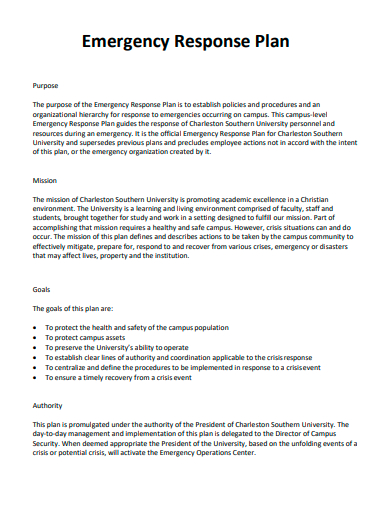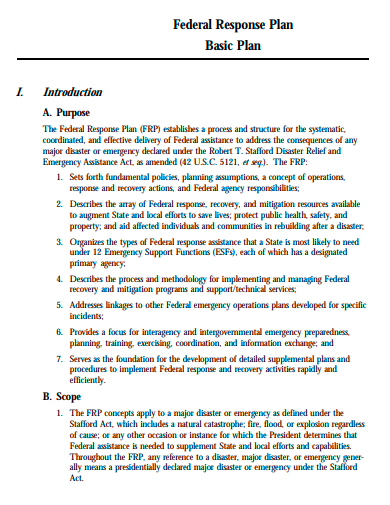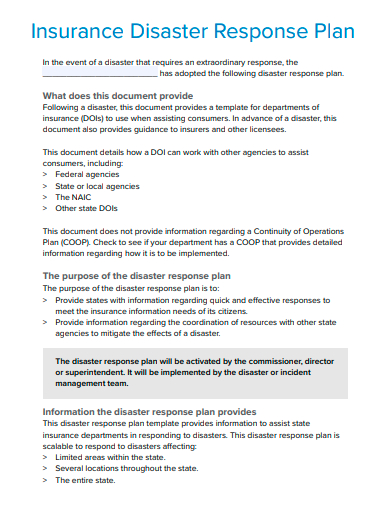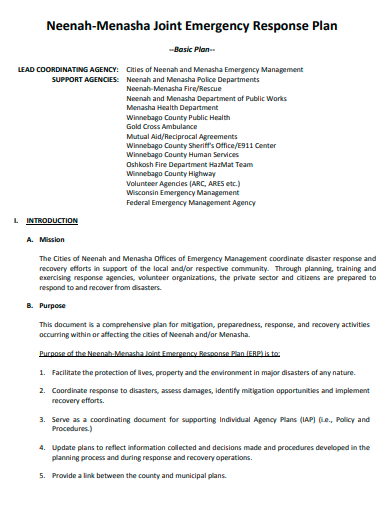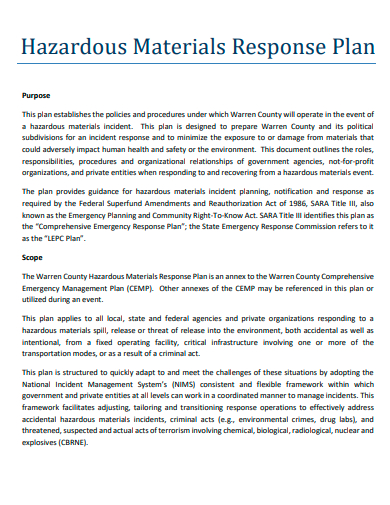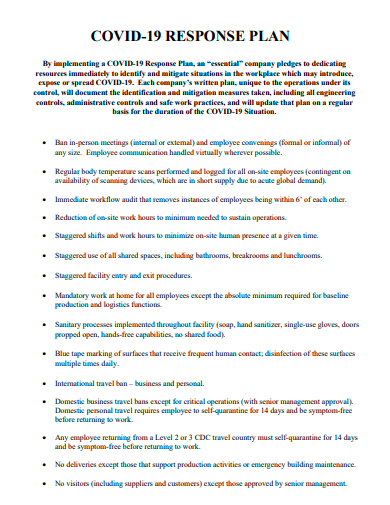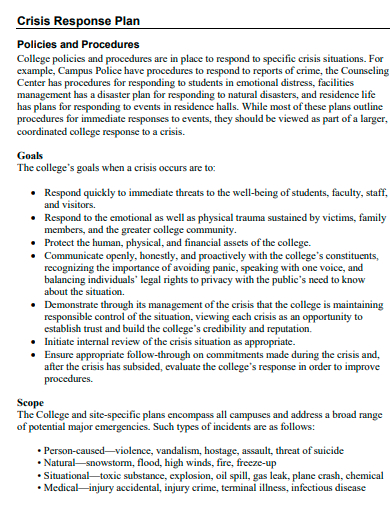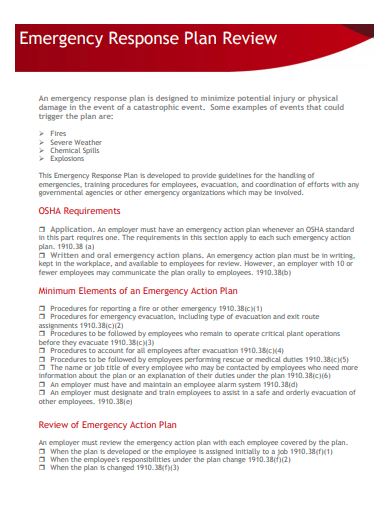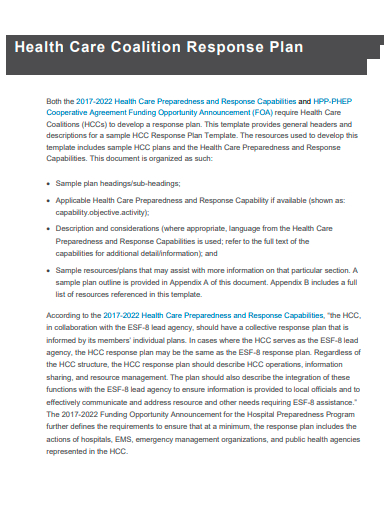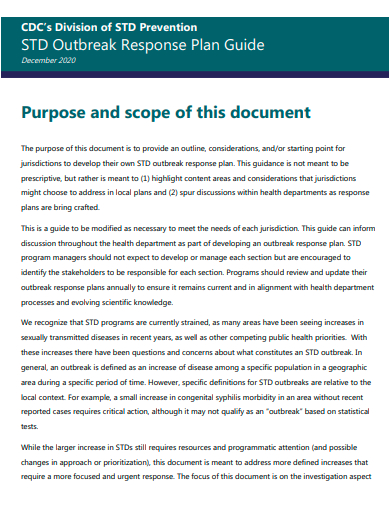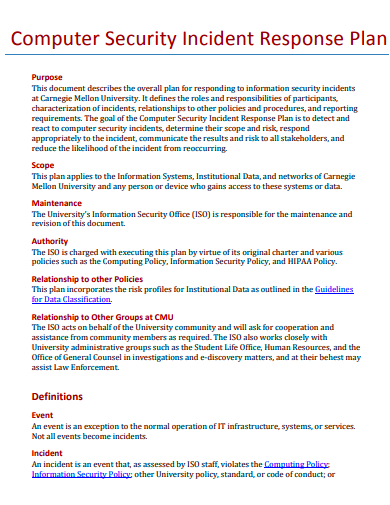In the event of a crisis, following to the response plan can help to reduce the severity of the impact of the situation while also ensuring the environment protection of persons and personal property. It is absolutely necessary for businesses to have a response plan that has been carefully crafted and thoroughly practiced to guarantee that they are ready to deal with any crisis that may arise.
FREE 10+ Response Plan Samples
1. Emergency Response Plan
2. Federal Response Plan
3. Insurance Disaster Response Plan
4. Joint Emergency Response Plan
5. Hazardous Materials Response Plan
6. COVID-19 Response Plan
7. Crisis Response Plan
8. Emergency Response Plan Review
9. Health Care Coalition Response Plan
10. Outbreak Response Plan
11. Computer Security Incident Response Plan
What Is a Response Plan?
A response plan is a set of procedures and actions that are put in place to manage and respond to an emergency operations or crisis situation. It outlines the steps that should be taken to mitigate the impact of the event and protect the safety of people and purchased assets. A response plan typically includes information on how to evacuate a building construction or area, how to provide medical care and assistance, how to communicate with stakeholder management and the media, and how to coordinate with emergency services. It may also include information on how to restore operations and services after the event has passed. The specific elements of a response plan will depend on the nature of the emergency or crisis and the resources available to respond to it.
How To Make a Response Plan?
Effective response plans should be comprehensive and take into account the specific risks and activity hazards faced by the organization. They should also be flexible, as emergencies can be unpredictable and require quick decision-making. Here are some steps you can follow to create a response plan:
Step 1- Identify Potential Emergencies
Consider the risks and hazards specific to your organization, such as fires, natural disasters, chemical spills, or active shooter situations. Then, determine who will be responsible for responding to each type of emergency: Assign roles and responsibilities to specific individuals or teams.
Step 2- Develop Procedures
Outline the specific actions that should be taken to mitigate the impact of the emergency and protect the safety of people and assets. This is to help you follow a more rigid and efficient solution to any crisis.
Step 3- Create a Communication Plan
Identify the channels and methods that will be used to communicate with employees, stakeholders, and emergency services during an emergency. Then, establish a system for activating the response plan: Determine the triggers that will activate the response plan and how it will be communicated to those who need to respond.
Step 4- Test and Review
Regularly test and review the response plan to ensure it is effective and up to date. Lastly, train employees on the response plan: Provide training to employees on the response plan and their roles and responsibilities in the event of an emergency.
Who should be involved in the development of a response plan?
All relevant stakeholders should be involved in the development of a response plan, including employees, management, and emergency services. This ensures that the plan is comprehensive and takes into account the needs and concerns of all parties.
How often should a response plan be reviewed and updated?
A response plan should be reviewed and updated regularly, at least once a year or whenever there are significant changes in the organization or its environment. This ensures that the plan remains effective and up to date.
What should be included in a response plan?
A response plan should include procedures for evacuating a building or area, providing medical care and assistance, communicating with stakeholders and the media, and coordinating with emergency services. It should also outline the steps that will be taken to restore operations and services after the emergency has passed.
A response plan is important because it helps to ensure the safety of people and assets in the event of an emergency or crisis. It provides a structured and organized approach to managing the situation, which can minimize the impact of the event and protect against further damage or harm.
Related Posts
FREE 10+ Site Safety Emergency Plan Samples in MS Word ...
FREE 10+ School Emergency Operations Plan Samples ...
FREE 10+ Remote Work Emergency Plan Samples in MS Word ...
FREE 10+ Business Financial Contingency Plan Samples in MS ...
FREE 10+ Service Business Contingency Plan Samples in MS Word ...
FREE 9+ Crisis Plan Samples in PDF MS Word
FREE 6+ Risk Plan Samples & Templates in PDF
FREE 10+ Emergency Safety Plan Samples in MS Word Google ...
FREE 10+ Online Business Contingency Plan Samples in MS Word ...
FREE 10+ Sample Incident Action Plan Templates in MS Word PDF
FREE 10+ Workplace Emergency Action Plan Samples in MS Word ...
FREE 10+ Security Incident Response Report Samples [ Cyber ...
FREE 10+ Dental Business Contingency Plan Samples in MS Word ...
FREE 13+ Crisis Management Plan Samples in PDF MS Word
FREE 10+ Portfolio Management Plan Samples in PDF MS Word ...

